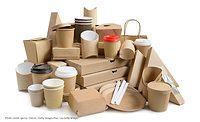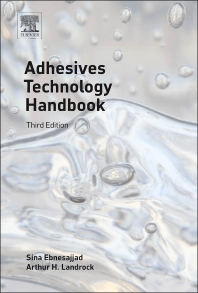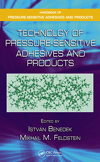A new ASTM International standard, ASTM D7447, Practice for
Symbolizing Adhesive Applications, provides a convenient way for engineers to
represent adhesives on a computer-aided design drawing. The standard, a
collaborative effort between ASTM and The Adhesive and Sealant Council, Inc.,
is under the jurisdiction of Subcommittee D14.60 on Adhesive
Material Classification System, which is part of ASTM International Committee D14 on Adhesives.
Lawrence Sloan, president of The Adhesive
and Sealant Council, Inc. and a D14 member, says that the symbol described
in ASTM D7447 originated
with a focus group that ASC conducted with engineers, designers, and architects
to learn about their perceptions of adhesives. The focus group results
indicated that those questioned would be more apt to specify adhesives if they
could be represented conveniently on a CAD (computer-aided design) drawing,
rather than the current method of embedding comments in a “notes” section.
Designers, engineers, architects and anyone else preparing a CAD drawing would
benefit from use of ASTM
D7447, according to Sloan.
ASC based the methodology of the symbol on the American National Standards
Institute/American Welding Society A2.3 standard, Symbols for Welding and
Nondestructive Testing and the International Organization for Standardization
(ISO) 15785 standard, Technical Drawings - Symbolic Presentation and Indication
of Adhesive, Fold and Pressed Joints.
“ASC approached ASTM in 2006 with the idea of creating a new standard in tandem
with the symbol, as it was felt that standardization would help build
international credibility within the design-engineering community,” says Sloan.
“Plus, we received grassroots interest from Mercedes and other automotive
companies in Germany
supporting our decision to work with ASTM International.”
ASC has also developed an electronic file based on ASTM D7447 that consists of
a series of fields that the designer can populate with information such as
adhesive chemistry type and physical form, surface preparation, curing information
and more. “The electronic file is a convenient way for the designer to
represent an adhesive’s many characteristics in one symbol by eliminating the
tedious task of manually adding adhesives in the ‘notes’ section of CAD
program,” says Sloan.
ASTM International standards are available for purchase from Customer Service
(phone: 610-832-9585;service@astm.org) or atwww.astm.org. For technical Information, contact
Lawrence Sloan, Adhesive and Sealant Council, Bethesda, Md.
(phone: 301-986-9700 ext. 111;larry.sloan@ascouncil.org).
ASTM International welcomes and encourages participation in the development of
its standards. ASTM’s open consensus process, using advanced Internet-based
standards development tools, ensures worldwide access for all interested
individuals. For more information on becoming an ASTM member, please contact
Joe Hugo, ASTM International (phone: 610-832-9740;jhugo@astm.org).
ASTM INTERNATIONAL: Adhesives Symbol for CAD (5-19-09)
Looking for a reprint of this article?
From high-res PDFs to custom plaques, order your copy today!








